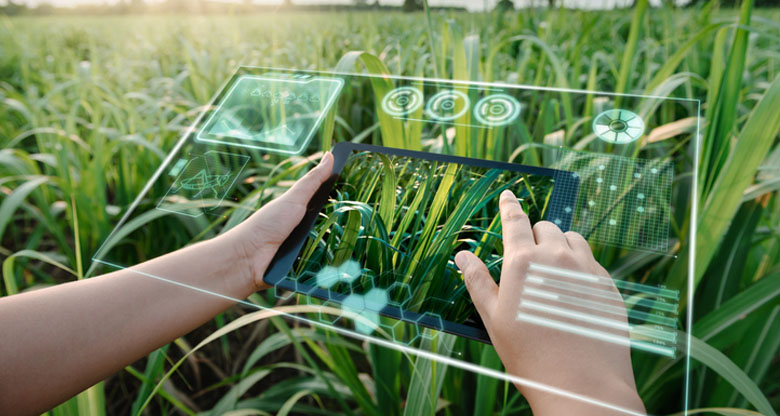In today’s world, the Internet of Things (IoT) is transforming various sectors, with agriculture being one of the most promising fields. As global food demand rises and natural resources grow scarcer, smart farming powered by IoT technology offers sustainable solutions to boost productivity, efficiency, and environmental responsibility. This article explores the integral role of IoT in modern agriculture and why it’s increasingly essential for a sustainable future.

Understanding IoT in Agriculture
What is IoT in Agriculture?
IoT in agriculture refers to the use of interconnected devices and sensors that communicate with each other and with agricultural software systems. These technologies provide real-time insights, enabling farmers to monitor crop conditions, soil health, and livestock, facilitating informed decision-making.
The Importance of IoT in Modern Farming
IoT technology helps in tackling major agricultural challenges, including unpredictable weather patterns, water scarcity, and labor shortages. By incorporating IoT, farmers gain data-driven insights that lead to higher yields, reduced waste, and optimized use of resources.
Key Applications of IoT in Agriculture
Precision Farming with IoT
Precision farming relies on IoT devices to gather data about soil conditions, crop health, and weather. By analyzing this data, farmers can precisely apply fertilizers, pesticides, and water only where it’s needed, reducing waste and promoting efficient resource use.
Livestock Monitoring and Management
IoT devices such as smart collars and RFID tags help farmers track animal health, location, and behavior. This information aids in early disease detection, prevents theft, and ensures that animals are well cared for, ultimately enhancing productivity in dairy and meat production.
Smart Irrigation Systems
With IoT-enabled smart irrigation systems, sensors monitor soil moisture levels and weather forecasts to determine optimal watering schedules. This conserves water, cuts costs, and ensures that crops receive the necessary moisture, even in water-scarce areas.
How IoT Improves Agricultural Efficiency
Real-Time Data Collection and Analysis
IoT devices provide a continuous stream of real-time data on various parameters like soil health, crop growth, and environmental conditions. This immediate access to data allows farmers to make quick adjustments, increasing efficiency and yield.
Automated Equipment and Operations
Automation, driven by IoT, enables machinery like tractors and sprayers to operate autonomously, minimizing human intervention. Such automation reduces labor costs, increases precision, and allows farmers to cover more land in less time.
Environmental Impact of IoT in Agriculture
Reducing Resource Wastage
IoT systems prevent overuse of water, pesticides, and fertilizers by only applying them as needed. This decreases resource wastage, cuts down costs, and reduces environmental pollution, promoting sustainable farming practices.
Enhancing Soil Health
By monitoring soil conditions, IoT technology helps farmers make decisions that maintain soil fertility. Proper nutrient management through IoT prevents soil depletion and supports long-term agricultural productivity.
Benefits of IoT in Agriculture
Increased Crop Yield
IoT technology provides actionable insights that lead to timely interventions, increasing crop yield. By knowing precisely when to water, fertilize, or harvest, farmers can maximize production and meet the growing food demands.
Cost Savings and Profitability
IoT reduces the reliance on manual labor and optimizes the use of inputs like water and pesticides, cutting operational costs. The result is improved profitability for farmers, making IoT a financially viable solution.
Challenges in Implementing IoT in Agriculture
Connectivity and Infrastructure Limitations
Many rural areas lack the robust internet infrastructure required for IoT functionality. Without reliable connectivity, farmers may struggle to leverage IoT’s full potential in remote farming regions.
Data Privacy Concerns
With increased data collection, privacy concerns emerge. Farmers may hesitate to adopt IoT technology if they fear that sensitive information about their operations could be misused.
Future Prospects of IoT in Agriculture
Advanced Analytics and Predictive Modeling
As IoT technology evolves, so does the potential for predictive analytics. Farmers could soon receive predictive insights on weather patterns, crop diseases, and market demand, empowering them to make proactive decisions.
Integration with Artificial Intelligence (AI)
Combining IoT with AI will enable even more precise farming solutions, with AI analyzing vast amounts of IoT data to provide actionable recommendations. This fusion could redefine modern agriculture, making it highly efficient and productive.
Conclusion
The integration of IoT in agriculture is transforming the industry by introducing data-driven, sustainable, and efficient farming practices. As IoT technology becomes more accessible, it is likely to become a fundamental component of modern agriculture, addressing global food challenges while reducing environmental impact.
FAQs
What is the role of IoT in agriculture?
IoT technology allows farmers to monitor and manage farm operations through real-time data, enhancing productivity, efficiency, and resource conservation.
How does IoT improve water management in farming?
IoT-enabled irrigation systems use sensors to monitor soil moisture levels, optimizing water use based on real-time data, which conserves water and improves crop health.
What are the main challenges of implementing IoT in agriculture?
Key challenges include limited connectivity in rural areas and concerns over data privacy, which can hinder widespread IoT adoption in farming.
How does IoT contribute to sustainable farming?
By reducing resource waste and enhancing soil health through precise application of inputs, IoT promotes environmentally sustainable farming practices.
What future developments can we expect in IoT for agriculture?
Future advancements may include predictive analytics and integration with AI, which could provide farmers with even more precise and actionable insights.
